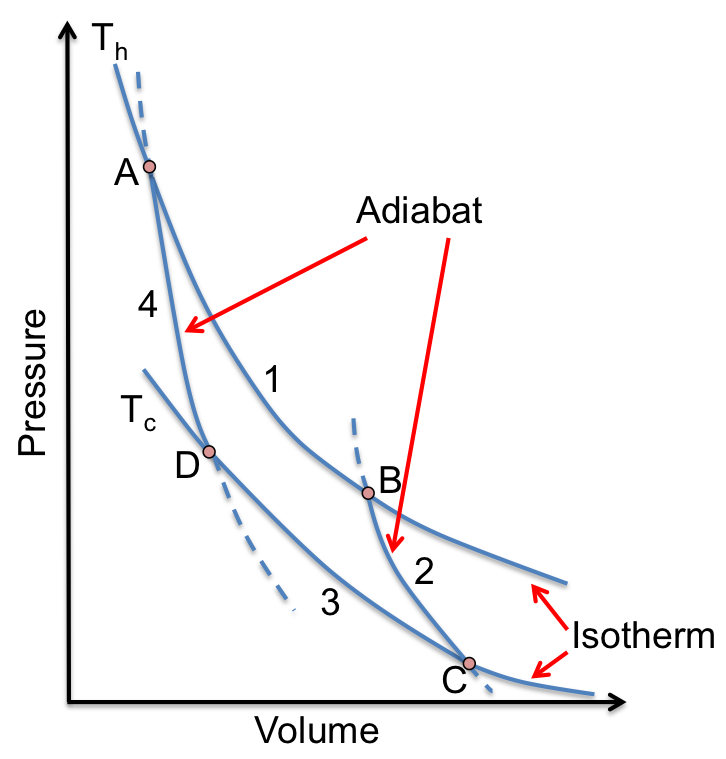A Carnot heat pump is a reverse Carnot engine. It is a theoretical construct that transfers heat from a cold reservoir to a hot reservoir, as a result of net work done on the system.


Consider a gas in a piston-cylinder device (see diagram above) that repeatedly undergoes a cycle that consists of four reversible processes as follows:
- (D to C) The pressure and temperature of the gas at D is equal to
and
respectively. At this point, the device is in thermal contact with a cold reservoir at a constant temperature
. Heat is transferred from the cold reservoir to the gas with
being reduced infinitesimally, causing the gas to expand and push the piston up to do work on the surroundings. This process is a reversible isothermal expansion of the gas.
- (C to B) The contact with the cold reservoir is removed and the device is thermally insulated. Work is done on the system, with
increasing infinitesimally. The gas is consequently compressed and its internal energy increases, leading to a rise in temperature to
. This process is a reversible adiabatic compression of the gas.
- (B to A) The device is placed in contact with a hot reservoir at a constant temperature
and the insulation is removed. Work done on the gas continues, with
increasing infinitesimally, resulting in the transfer of heat from the gas to the reservoir. This process is a reversible isothermal compression of the gas.
- (A to D) The contact with the hot reservoir is removed and the device is thermally insulated again.
is now decreased infinitesimally, resulting in a decrease in the internal energy of the gas, with its temperature dropping to
. This process is a reversible adiabatic expansion of the gas.
It is important to note that steps 2 and 3 of the cycle are accomplished with energy from the surroundings (external source) in the form of work. The Carnot heat pump, together with the Carnot heat engine, is used to explain Carnot’s theorem.